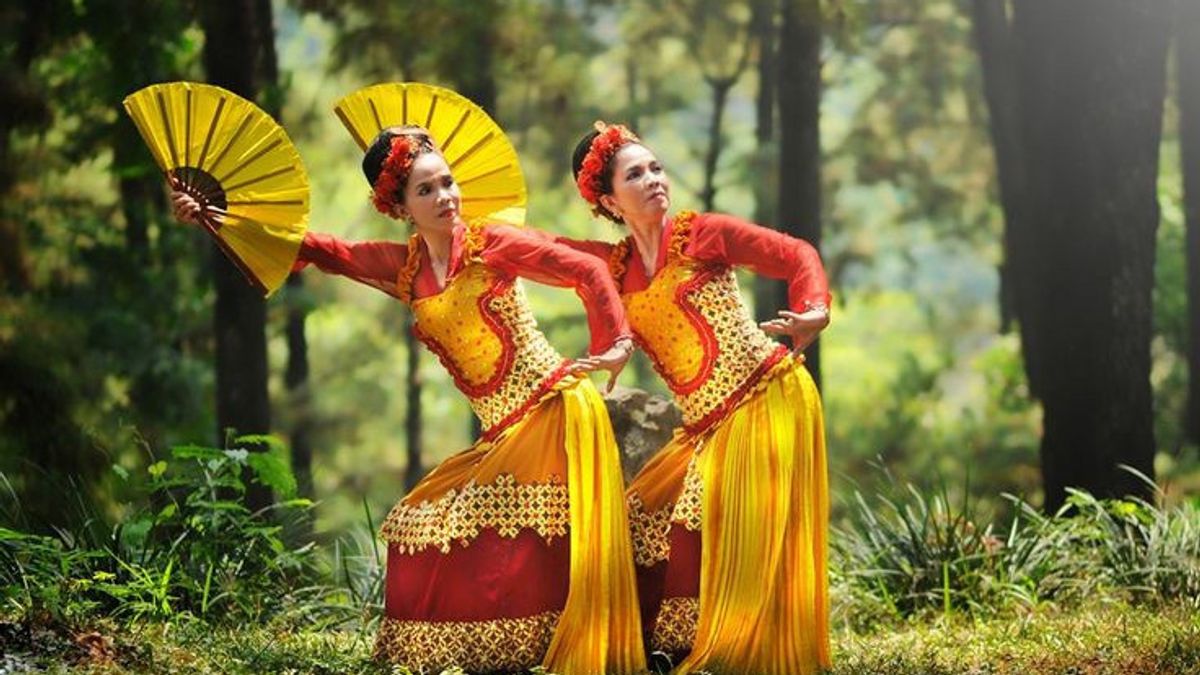YOGYAKARTA - There are many types of traditional dances in Indonesia spread throughout the region. Starting from Sabang to Meraukeyang has their respective traditional dances. But this time we will discuss about the Jaipong Dance.
The reason is, the Jaipong dance is a type of dance that comes from West Java. At first this dance developed in the Karawang area and also Bandung.
But did you know that Jaipong dance is a combination of a number of traditional arts? Such as pencak silat, wayang golek, and also ketuk tilu. From there this dance is popular as a dance that has unique, simple and energetic movements.
Not only energetic, the dance is also played with a cheerful and humorous atmosphere. Of course, this dance can entertain the audience when watching it. In fact, not infrequently there are spectators who laugh When they see this Jaipong dance art.
Those who laughed were because they felt carried away when they saw. This unique dance from West Java is still preserved, and is studied.
Well, in this review, it will stall about the jaipong Dance. How is the history and characteristics. Here is the full discussion.
Launching from a book entitled the diversity of Indonesian Dance art created by Resi Septiana Dewi, the Jaipong Dance itself seems to be an artistic flow that comes from the creativity of an artist from Bandung, he was Gugum Gumbira in the 1970s.
Initially, Gugum wanted to find out typical West Java arts by carrying out expeditions to several areas in Tanah Sundanese. From the results of his search, Gugum formulated that there were 3 types of arts that attracted his attention, namely pencak silat, Tayuban Dance, and Tap Tilu dance.
Up to that, the Jaipong Dance choreography features the tap Tilu dance movement which has opening, decreasing, nibakeun factors, and several other detailed movements. Then, the basic movement of the Jaipong Dance, such as the ibing bajidor and banjet masks, was taken from Tayuban Dance and Pencak Silat.
The Jaipong Dance works that are first known to the public are the Keser Bojong Leave Dance and Rendeng Bojong. These dances include the type of women's dance and pairwise dance (male and female).
However, the beginning of the appearance of the Jaipong Dance was once a conflict among the community. In the book Sundanese Dance Dulu, Kini, and Tomorrow by Nagati, this is because the Jaipong Dance hip movement is considered unethical to be shown in public.
Even so, the Jaipong Dance continues to grow until it is famous in the country. In fact, the name Gugum Gumbira became increasingly popular after the Jaipong Dance was staged on one of the TVRI shows at the central station of Jakarta around the 1980s.
At that time, the Jaipong Dance was often staged in various tv activities, celebrations, or celebrations organized by the government or the private sector. Currently, the Jaipong Dance is one of the traditional arts that always survives and becomes an icon of West Java culture.
SEE ALSO:
Characteristics Of Jaipong Dance
As we all know, our nation is not only rich in the subject of natural products, but also rich in culture. Starting from the field of literary arts, dance arts, art in the form of applied art and pure art, building arts, musical arts and so on.
From the diversity of traditional arts, which are very diverse, of course each of these arts has its own characteristics. With one of them, dance is from West Java, namely the Jaipong dance.
This dance has its own characteristics, especially in the jaipong dance style of kaleran. Among them are humanism, joy, enthusiasm, eroticism, simplicity, and spontaneity.
The distinctive characteristics of the jaipong dance can be reflected in the presentation of the dance. There is a pattern or what is also called the ibing pattern
Ibing pattern is usually performed by a single dancer or known as Sinden Taandakan. A sinden who cannot sing but dances to a sinden song or the designation is Juru Kawih.
For example, in the art of jaipong dance that developed in the Bandung area. Not only that, the accompaniment of the Dengung-shaped musical instrument brought the atmosphere to be cheerful. Until it's not surprising, many people dance when they see this performance.
Actually, not only Jaipong, who is famous in West Java, you also need to know the 'History of the Meningan Mojang Dance from West Java'.
So after knowing the history and characteristics of Jaipong dance, see other interesting news on VOI.ID, it's time to revolutionize news!
The English, Chinese, Japanese, Arabic, and French versions are automatically generated by the AI. So there may still be inaccuracies in translating, please always see Indonesian as our main language. (system supported by DigitalSiber.id)


















